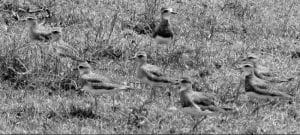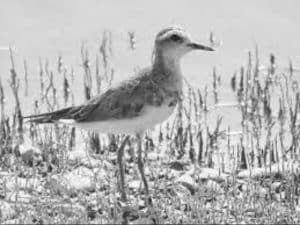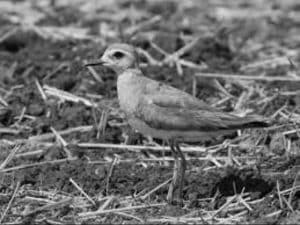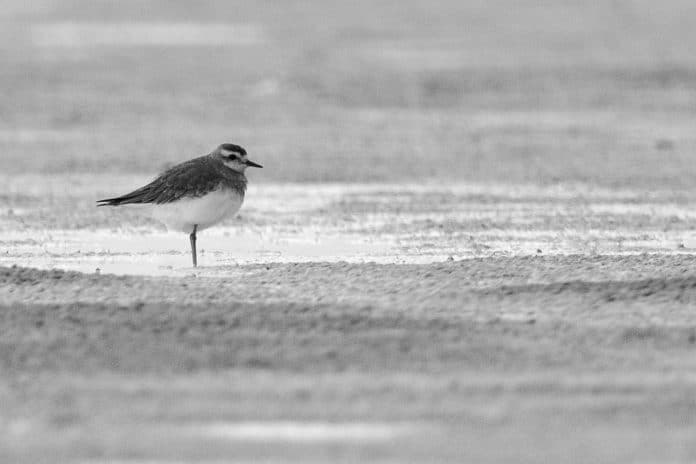Introduction to the Caspian Plover in Tanzania
The Caspian Plover, scientifically known as Charadrius asiaticus, is a remarkable migratory bird that graces the plains of Tanzania. These elegant birds embark on an incredible journey, traveling thousands of kilometers each year from their breeding grounds in Central Asia to their wintering grounds in Africa. Tanzania is a favored destination for the Caspian Plover, offering a diverse and suitable habitat for their stopover during migration. In this article, we will explore the fascinating world of the Caspian Plover in Tanzania, including its habitat, migration patterns, appearance, behavior, conservation status, and best locations for birdwatching.
Habitat and Migration Patterns of the Caspian Plover

The Caspian Plover is known to breed in the vast steppes and arid regions of Central Asia, including Kazakhstan, Mongolia, and Russia. During the breeding season, these birds prefer open grasslands and desert-like habitats. However, when it comes to migration, Tanzania becomes their temporary home. The Caspian Plover arrives in Tanzania around September and stays until March, taking advantage of the favorable climate and abundant food resources. The coastal plains, wetlands, and inland lakes of Tanzania provide the perfect stopover sites for these migrants, offering a rich variety of insects, worms, and small invertebrates.
The Appearance and Behavior of the Caspian Plover
The Caspian Plover is a medium-sized wader, measuring about 18-20 centimeters in length. Its plumage is striking, with a combination of brown, black, and white feathers. The bird’s back and wings are predominantly brown, while its belly and chest are white. The Caspian Plover has a distinct black band across its chest, giving it a unique and elegant appearance. During the breeding season, the male plovers develop a black belly patch, which adds to their charm. These birds are known for their graceful flight and agility on the ground, as they swiftly run and hop in search of food.
Conservation Status and Threats to the Caspian Plover in Tanzania
The Caspian Plover is currently listed as a species of “Least Concern” on the IUCN Red List, indicating that its population is relatively stable. However, there are still threats that need to be addressed to ensure the continued survival of this species in Tanzania. Loss of habitat due to human activities, such as agriculture and infrastructure development, poses a significant challenge for the Caspian Plover. Additionally, disturbances caused by tourism and unregulated birdwatching can disrupt their feeding and breeding behaviors. It is crucial for conservation organizations and local communities to work together to protect the habitats and implement responsible tourism practices to safeguard the Caspian Plover and its environment.
Best Locations for Birdwatching the Caspian Plover in Tanzania

Tanzania offers several fantastic locations for birdwatching, where you can spot the Caspian Plover in its natural habitat. One of the top destinations is the Serengeti National Park, known for its vast savannahs and diverse birdlife. The open plains of the Serengeti provide ample opportunities to observe the plovers as they forage and display their beautiful plumage. Lake Natron, located in the northern part of Tanzania, is another prime spot for spotting the Caspian Plover. This alkaline lake is a haven for many bird species, including flamingos, and it serves as a vital stopover site for the plovers during migration.
Tips for Spotting and Identifying the Caspian Plover in Tanzania
Spotting and identifying the Caspian Plover requires some patience and knowledge of its distinct features and behaviors. When searching for these birds, it is essential to keep an eye on open grasslands, sandy areas, and the shores of lakes and wetlands. The Caspian Plover is known to be quite vocal, with a distinctive call that resembles a sharp, metallic whistle. Observing their behavior can also help in identification, as they often run in short bursts and pause to feed on insects and other small prey. Utilizing field guides and binoculars can greatly enhance your birdwatching experience, allowing you to appreciate the beauty of the Caspian Plover up close.
Other Bird Species Found in the Tanzanian Plains
While searching for the Caspian Plover in Tanzania, birdwatchers will also have the opportunity to encounter a wide range of other bird species. Tanzania is home to over 1,000 bird species, making it a paradise for bird enthusiasts. Some notable species that can be spotted alongside the Caspian Plover include the Greater Flamingo, Secretary Bird, African Fish Eagle, Lilac-breasted Roller, and the iconic Maasai Ostrich. Exploring the diverse habitats of Tanzania, from the Serengeti and Ngorongoro Crater to the Selous Game Reserve and the shores of Lake Victoria, will unveil a vibrant tapestry of avian wonders.
Responsible Tourism and Birdwatching Ethics in Tanzania

As visitors to the beautiful landscapes of Tanzania, it is our responsibility to practice responsible tourism and adhere to birdwatching ethics. When observing the Caspian Plover and other bird species, it is crucial to maintain a respectful distance, ensuring that our presence does not disturb their natural behaviors. Avoid approaching nesting sites or interfering with their feeding and breeding activities. Additionally, make sure to follow local regulations and guidelines regarding birdwatching and photography. By practicing responsible tourism, we can contribute to the conservation efforts and ensure the long-term survival of the Caspian Plover and its fellow avian inhabitants.
Resources for Further Learning about the Caspian Plover in Tanzania
For those eager to delve deeper into the world of the Caspian Plover in Tanzania, there are numerous resources available for further learning. Bird field guides specific to Tanzania, such as “Birds of East Africa” by Terry Stevenson and John Fanshawe, provide detailed information and illustrations of the Caspian Plover and other bird species found in the region. Online platforms, such as the BirdLife International website and eBird, offer valuable data on bird distribution and conservation status. Local birdwatching organizations and nature reserves may also provide guided tours and educational materials to enhance your knowledge and appreciation of these elegant migrants.
Conclusion: Appreciating the Beauty of the Caspian Plover in Tanzania
The Caspian Plover is an awe-inspiring migratory bird that adds a touch of elegance to the vast plains of Tanzania. Its annual journey from Central Asia to Africa is a testament to the extraordinary feats of avian migration. Tanzania’s diverse habitats and favorable climate provide the Caspian Plover with an essential stopover site during its long journey. By understanding their habitat, behavior, and conservation status, we can appreciate the beauty of these birds and contribute to their protection. So, grab your binoculars, immerse yourself in the Tanzanian plains, and witness the majestic Caspian Plovers in all their splendor.


































